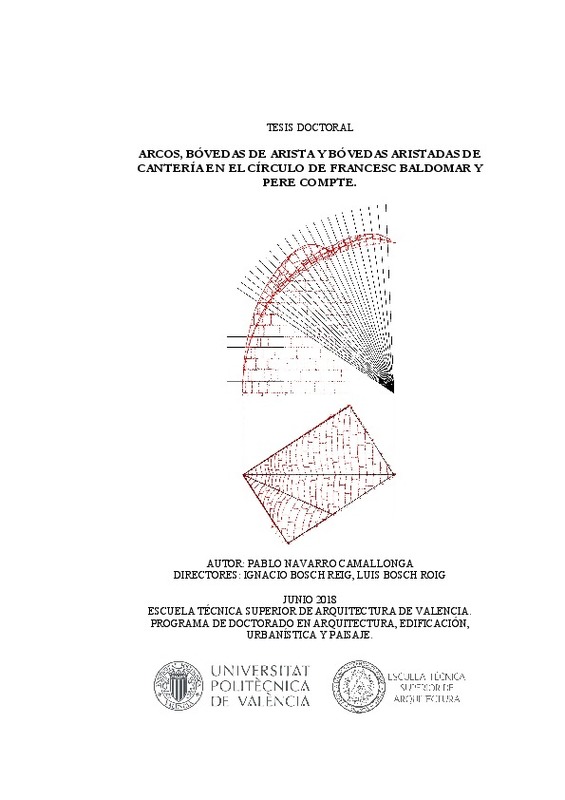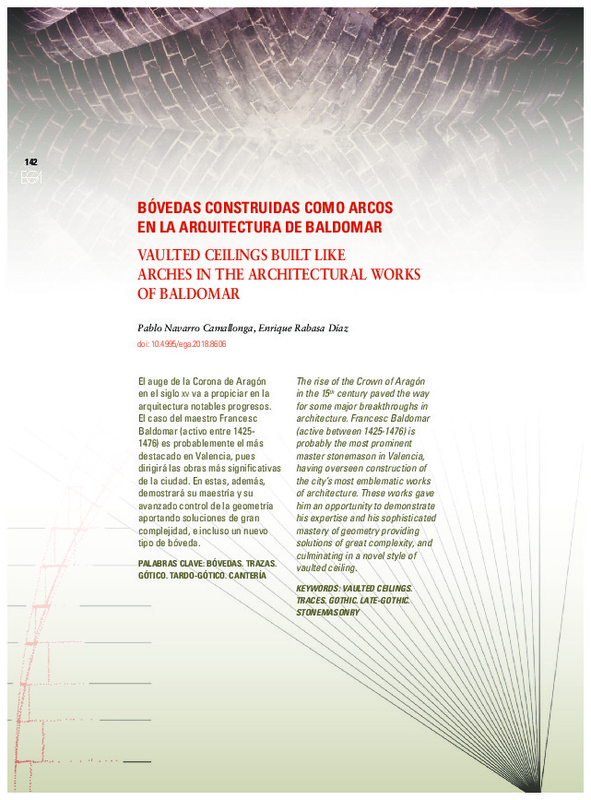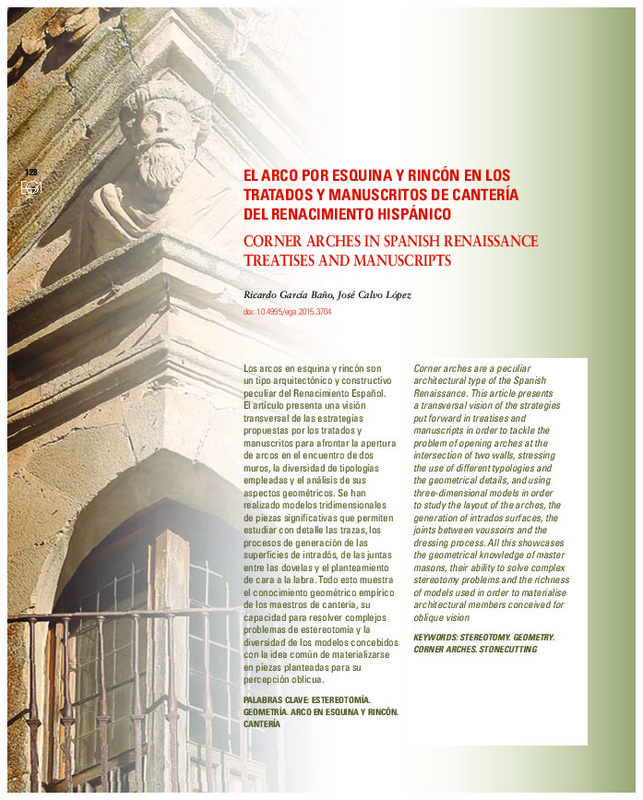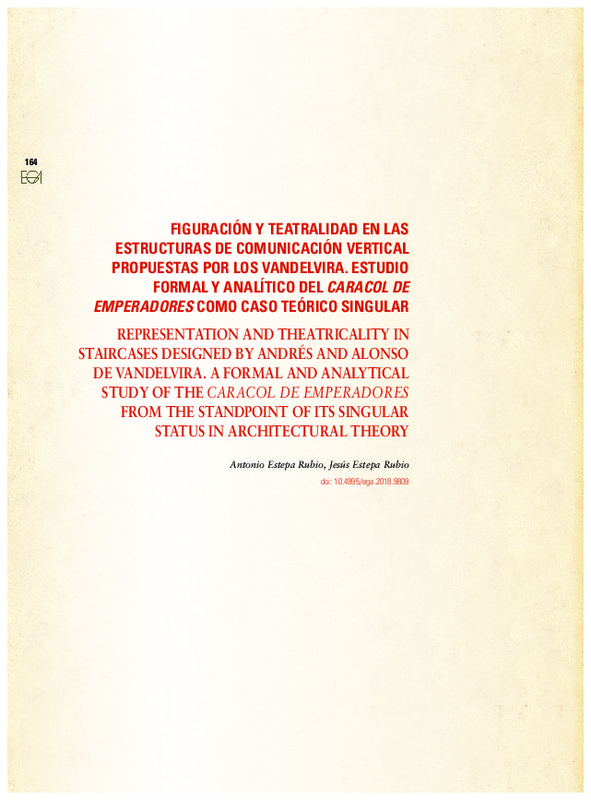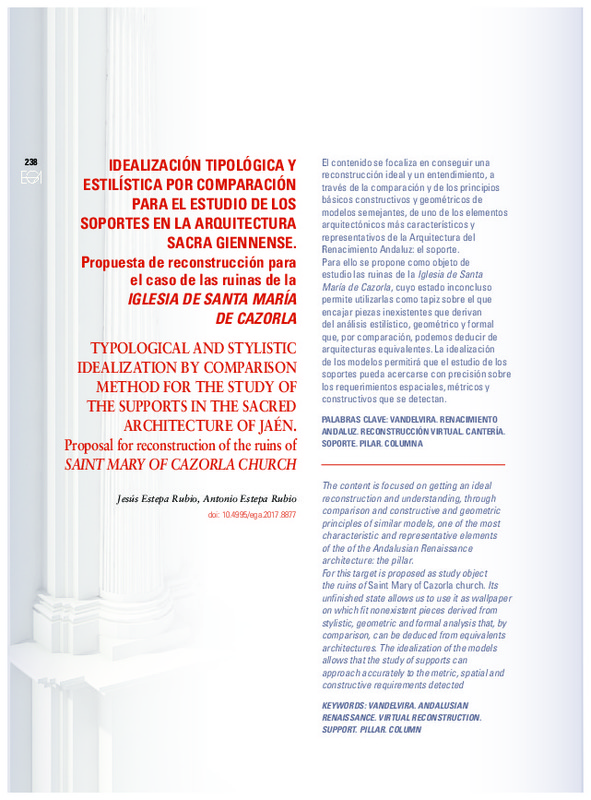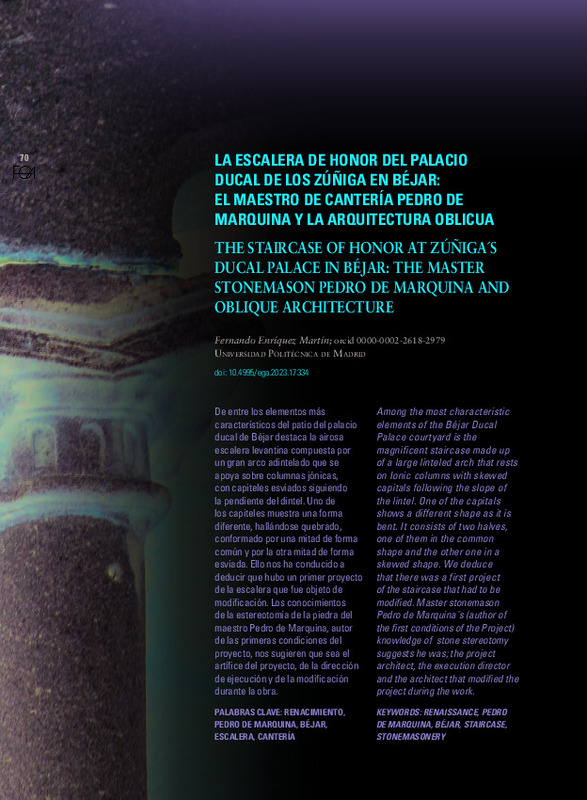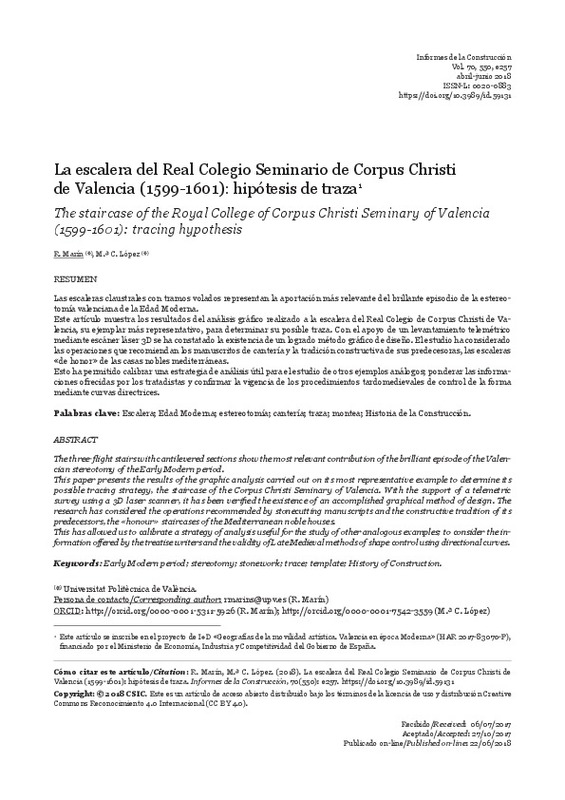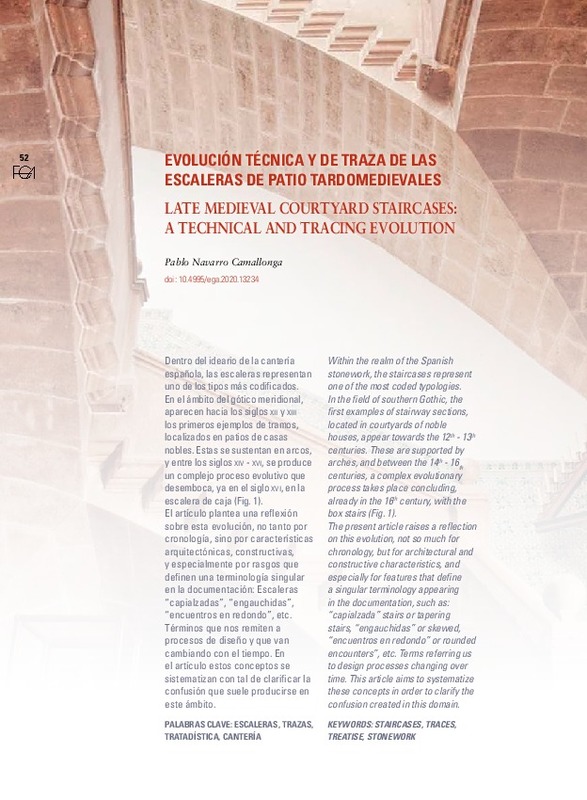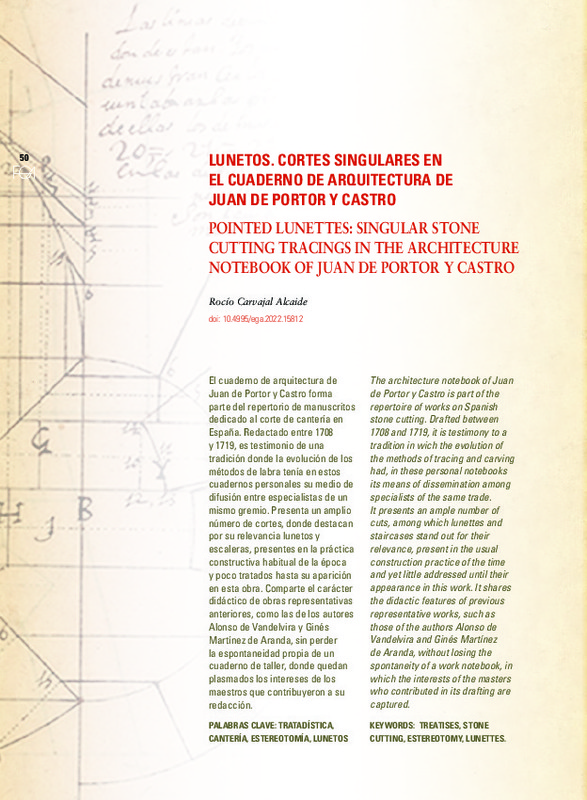

Listar por palabra clave "Cantería"
RiuNet: Repositorio Institucional de la Universidad Politécnica de Valencia
- RiuNet repositorio UPV
- :
- Listar por palabra clave
JavaScript is disabled for your browser. Some features of this site may not work without it.
Buscar en RiuNet
Listar
Mi cuenta
Ayuda RiuNet
Admin. UPV
Listar por palabra clave "Cantería"
Mostrando ítems 1-14 de 14
-
Navarro Camallonga, Pablo (Universitat Politècnica de València, 2018-09-10)Bajo el título de la tesis Arcos, bóvedas de arista y bóvedas aristadas de cantería en el círculo de Francesc Baldomar y Pere Compte, se desarrolla una investigación que, como se indica, centra su atención en el ámbito de ...
-
Navarro Camallonga, Pablo; Rabasa Díaz, Enrique (Universitat Politècnica de València, 2018-03-26)[EN] The rise of the Crown of Aragón in the 15th century paved the way for some major breakthroughs in architecture. Francesc Baldomar (active between 1425-1476) is probably the most prominent master stonemason in Valencia, ...
-
Millán Pérez, Abril (Universitat Politècnica de València, 2012-01-20)Descripción de los procesos de documetación y catalogación de las marcas de cantero halladas en la iglesia de San Martín de Valencia. Análisis de las causas de degradación de la piedra caliza y búsqueda de unos criterios ...
-
Garcia Baño, Ricardo; Calvo Lopez, Jose (Universitat Politècnica de València, 2015-06-22)[EN] Corner arches are a peculiar architectural type of the Spanish Renaissance. This article presents a transversal vision of the strategies put forward in treatises and manuscripts in order to tackle the problem of opening ...
-
Marín-Sánchez, Rafael (Instituto Juan de Herrera, 2023)[ES] Se realiza un breve recorrido por la evolución de las escaleras de tramos rectos con bóvedas voladas de la Corona aragonesa desde los primeros ejemplos de «escaleras de honor» tardomedievales hasta su adaptación a la ...
-
Estepa Rubio, Antonio; Estepa Rubio, Jesús (Universitat Politècnica de València, 2018-03-26)[EN] In the work of Andrés de Vandelvira, and of course in the manuscript treatise by his son Alonso, a number of complex stonecutting problems are worked out, including those involving warped surfaces. Adding complexity ...
-
Estepa Rubio, Jesús; Estepa Rubio, Antonio (Universitat Politècnica de València, 2017-11-21)[EN] The content is focused on getting an ideal reconstruction and understanding, through comparison and constructive and geometric principles of similar models, one of the most characteristic and representative elements ...
-
Enríquez Martín, Fernando (Universitat Politècnica de València, 2023-03-23)[EN] Among the most characteristic elements of the Béjar Ducal Palace courtyard is the magnificent staircase made up of a large linteled arch that rests on Ionic columns with skewed capitals following the slope of the ...
-
Marín-Sánchez, Rafael; López González, María Concepción (Departmento de Publicaciones del CSIC, 2018)[EN] The three-flight stairs with cantilevered sections show the most relevant contribution of the brilliant episode of the Valencian stereotomy of the Early Modern period. This paper presents the results of the graphic ...
-
López González, Concepción; Marín Sánchez, Rafael (Universitat Politècnica de València, 2019-07-22)[EN] This paper presents the results of the graphic analysis carried out on its most representative example to determine its possible tracing strategy, the imperial staircase of the Royal Monastery of San Miguel de los ...
-
Navarro Camallonga, Pablo (Universitat Politècnica de València, 2020-03-13)[EN] Within the realm of the Spanish stonework, the staircases represent one of the most coded typologies. In the field of southern Gothic, the first examples of stairway sections, located in courtyards of noble houses, ...
-
Carvajal Alcaide, Rocío (Universitat Politècnica de València, 2022-03-24)[EN] The architecture notebook of Juan de Portor y Castro is part of the repertoire of works on Spanish stone cutting. Drafted between 1708 and 1719, it is testimony to a tradition in wich the evolution of the methods of ...
-
Alvarez Afanador, Jorge Ernesto (Universitat Politècnica de València, 2011-07-28)Planteamiento de la linea de la escuela neoplatónica y sus orígenes, así como una breve búsqueda en fuentes cristiana cristianas y paganas a la organización angeleológica y su influencia en las formas de representación del ...
-
Navarro Camallonga, Pablo; Rojo Ferrer, Juan (Universitat Politècnica de València, 2024-10-03)[EN] This article shows the relationship between the Xàtiva stonemasonry manuscript Secretos de Arquitectura and other documentary sources. This manuscript, produced in the 18th century, belongs to the Spanish treatise ...
Mostrando ítems 1-14 de 14

Universitat Politècnica de València. Unidad de Documentación Científica de la Biblioteca (+34) 96 387 70 85 · RiuNet@bib.upv.es


